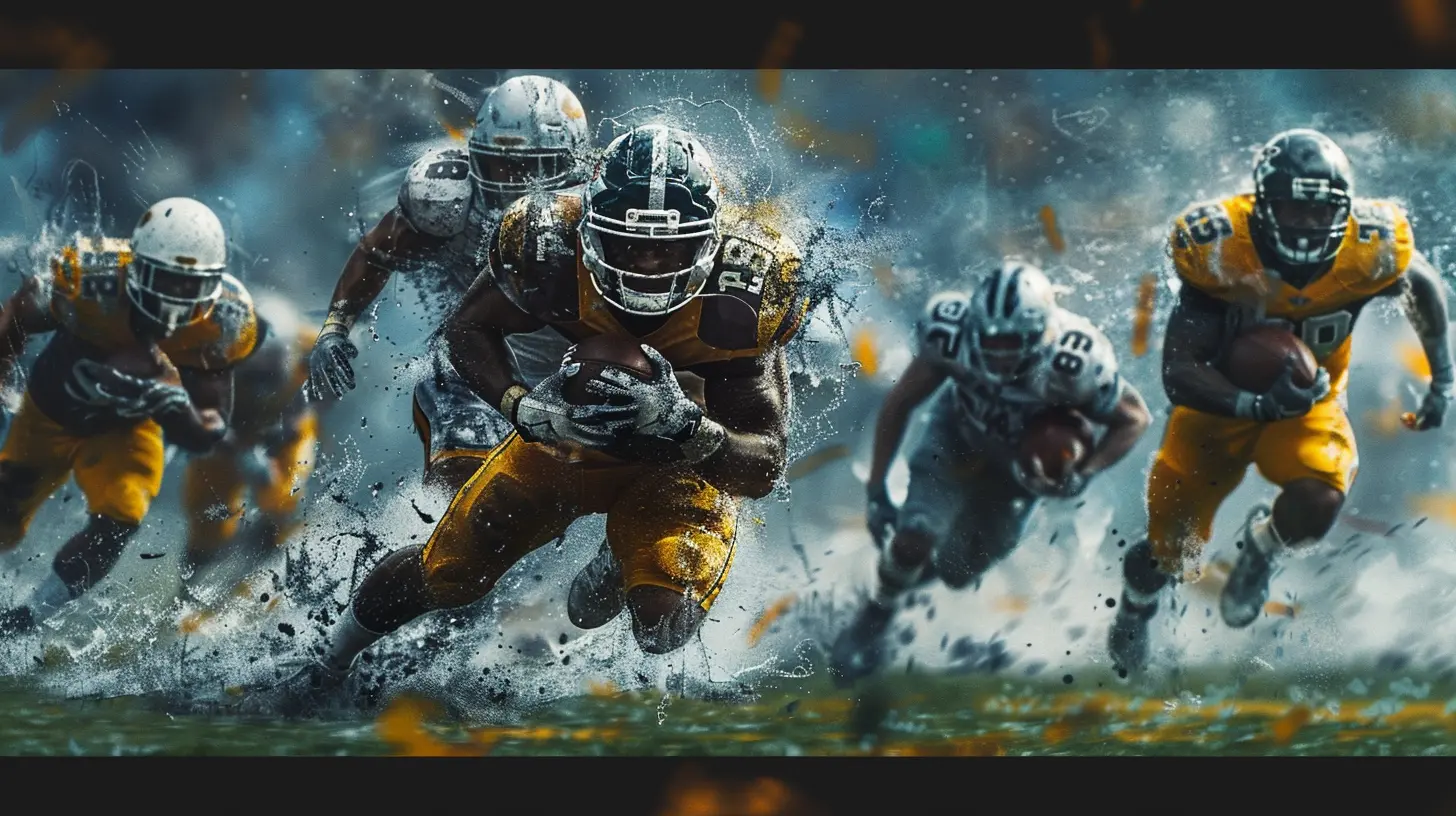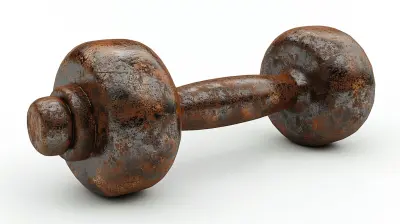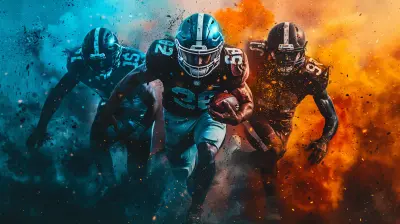Can Team A’s Attack Overcome Team B’s Disciplined Defense?
10 July 2025
When you put a team that lives for offense against a side that thrives on airtight defense, fireworks are bound to fly. It’s the age-old clash: creativity vs. structure, flair vs. control, chaos vs. order. Welcome to the showdown where we ask the big question—can Team A’s relentless attack unlock Team B’s steely, disciplined defense?
Let’s break it down, analyze both sides of the ball, and dig deep into what makes this matchup a tactical chess game that could go either way.
Meet the Contenders
Before we dive into tactics and strategies, let’s get a clear picture of who we’re talking about.Team A is your classic offensive powerhouse. They play fast, they press high, and they score—often and in style. With a lineup full of creative midfielders, nippy wingers, and a clinical striker, they’re built to outscore rather than shut down opponents.
On the flip side, Team B is all about discipline. Think solid shape, clean tackles, and relentless organization. They defend as a unit, frustrate the opposition with closed passing lanes, and rarely let anyone get a clean look at goal.
So, who wins when an unstoppable force meets an immovable object?
The Style Clash: Offense vs. Defense
This isn’t just about goals and clean sheets—it’s about football philosophy.Team A’s High-Octane Attack
Team A’s attack thrives on speed and unpredictability. Think quick one-twos, overlapping fullbacks, and through balls that split defenses like a hot knife through butter. They love to dominate possession but are just as dangerous on the counter. Their front line is always on the move, dragging defenders out of position and creating space in the blink of an eye.But here’s the catch—when they face a team that doesn’t bite, that holds its line and stays compact, they sometimes hit a wall. Overcommitting can leave gaps at the back, and if their flashy moves don’t stick, they risk being punished.
Team B’s Tactical Discipline
Team B’s defense isn’t just about parking the bus. It’s calculated and intelligent. They keep their shape, communicate constantly, and play with laser focus. You’ll rarely see them caught ball watching or lunging into rash challenges.Their backline doesn’t panic under pressure. Instead, they force attackers wide, double-team when needed, and make the penalty area a no-fly zone. And when they win the ball? They break with purpose—every clearance becomes a potential counterattack.
Key Battles That Could Decide It All
Every big game comes down to those one-on-one duels and pivotal moments. Let’s zoom in on where the game might be won or lost.Midfield Control: The War Zone
The midfield is where both teams will fight tooth and nail. Team A’s fluid midfielders will look to pull strings with quick passes and incisive runs. But Team B’s engine room is built to disrupt. Expect a hard-fought battle with tackles flying and no inch given.If Team A’s midfield maestros can find pockets of space, they’ll likely create chances. But if Team B closes them down quickly and forces sideways passes, the creativity dries up.
The Wing Play: Speed vs. Structure
Team A loves attacking wide areas. Their wingers like to hug the touchline before cutting in or crossing. That’s a great strategy—unless your opponent’s fullbacks aren’t easily beaten.Team B’s defensive setup is tailor-made to handle wide attacks. Their wingers track back, their fullbacks stay disciplined, and help is always a few steps away. So it comes down to this: can Team A's wide men beat their markers with pace and skill, or will they run into a brick wall?
The Final Third: Killer Instinct or Cold-Blooded Blocking?
In the box, it’s all about timing. Team A will throw numbers forward, trying to overload the area and create confusion. But Team B’s defenders are experts at reading the play, anticipating passes, and making clutch clearances.This battle is less about quantity and more about quality. Team A might get fewer shots on goal than they're used to. When they do, they’ll need to be clinical. One missed chance could be all Team B needs to tip the balance.
The Mental Game: Pressure vs. Patience
We often focus on tactics and formations, but mental toughness plays a huge role.Team A’s Need for Immediate Rewards
An attacking team like Team A feeds on momentum. Scoring early sets the tone, and frustration builds when they don’t break through. If Team B holds them at bay for 20, then 30, then 45 minutes… doubts creep in. Players start forcing things, making poor decisions, and losing focus.Team B’s Ice-Cold Composure
Meanwhile, Team B is built to absorb pressure. They’re comfortable seeing less of the ball. In fact, they often thrive when their opponents grow impatient. They stay calm, wait for the moment to pounce, and then unleash counter-attacks with surgical precision.Tactical Adjustments: Who’s More Flexible?
Live games don’t go exactly as planned—and the best teams adapt. So who’s better equipped for plan B?Can Team A Mix It Up?
If Team A’s Plan A doesn’t work, do they have a Plan B? Can they slow the game down, build patiently, or rely on set pieces if needed? The best attacking teams know when to switch gears.Bringing on a target man, switching to a more direct approach, or exploiting second balls can make a huge difference. But if they stubbornly stick to one style, Team B will eat them alive.
Can Team B Handle a Goal Down?
Defense is great. But what if they go behind early? Can Team B chase a game? That’s always the risk with defensive-minded teams. If they don’t have enough firepower up front, trying to claw back a lead could stretch their shape and leave them vulnerable.X-Factors and Wild Cards
Sometimes the game comes down to a moment of magic—or madness.Team A’s Creative Magician
Teams built on attack usually have that one special player—the one who sees passes others don’t, who changes the game with a flick, twist, or shot from nothing. If Team A has a player like that, all it takes is one opening to flip the script.Team B’s Defensive General
Every rock-solid defense needs a leader—someone who organizes the backline, inspires teammates, and reads the game like a novel. If Team B’s defensive general has a good game, they could frustrate even the most potent attack.So, Can Team A’s Attack Overcome Team B’s Disciplined Defense?
Let’s answer the big question.The short version? It depends.
If Team A brings their A-game, moves the ball quickly, and creates early chances, Team B will be under massive pressure. But if Team B holds their shape, breaks up plays, and keeps calm, they can suck the life out of the attack.
This isn’t a one-sided affair. What we’re looking at is a chess match where one mistake or one moment of brilliance could tip the balance. Team A’s attacking genius meets Team B’s defensive mastery—and it’s anyone’s game.
Final Thoughts: It’s All About Execution
At the end of the day, tactics are just words on a whiteboard. It’s the players who bring them to life. The question isn’t just "can" Team A break down Team B—the real question is "will they?"It comes down to execution. Precision. Timing. Focus. One team wants chaos. The other bets on control. And whichever one imposes their rhythm will likely walk away with the win.
all images in this post were generated using AI tools
Category:
Game PreviewsAuthor:

Everett Davis
Discussion
rate this article
1 comments
Reese Estes
Team A's creativity must exploit gaps; Team B's discipline hinges on maintaining tactical organization.
July 25, 2025 at 4:43 AM

Everett Davis
Absolutely! Team A's creativity can indeed exploit weaknesses, while Team B's disciplined organization is key to thwarting those efforts. It's a classic clash of innovation versus structure.


